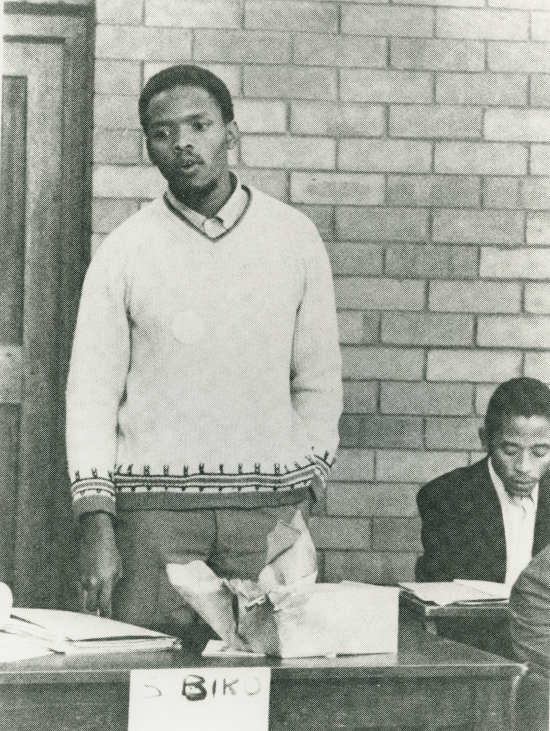"At the heart of black consciousness is the realisation by blacks that the most potent weapon in the hands of the oppressor is the mind of the oppressed."
- Steve Bantu Biko, I Write What I Like, 1978
2017 Marks 40 years since Steve Biko died in police custody. Biko was the founder of the Black Conciousness movement and remains to this day a vital part of the philosophical and political struggles that occured during apartheid.

Biko and his young comrades promoted the philosophy of Black Consciousness, which urged black people to free themselves from the chains of oppression and for all blacks (including Africans, Coloureds and Indians) to work towards liberation. Biko urged black people to take responsibility for their own struggle and not to rely on white liberals. To do this, it was necessary for black people to free themselves from the feelings of inferiority that had been instilled in them after 300 years of oppression. Rather, black people were to develop a pride in being black, and develop the self-confidence to determine their own future.
The Black Consciousness Movement (BCM) challenged the entire white structure that existed in South Africa by developing alternative structures. The students established the Black People’s Convention (BPC), which was an umbrella organisation to coordinate all Black Consciousness activities. It encouraged self-reliance through the creation of Black Community Programmes.
Black Consciousness played an important role in inspiring the Soweto youth to action in 1976. Its philosophy filled them with the self-confidence to address their own harsh circumstances. The South African Students’ Movement (SASM) was a Black Consciousness organisation of high school students, formed in 1968. SASM was central in politicising school students and encouraging them to take action. In 1973, a number of SASO students staged a walkout from black universities. Many of them became teachers in Soweto schools and also inspired the students to action.
After the Soweto Uprising, Black Consciousness was systematically targeted. Biko often ignored his banning orders in order to address crowds and to continue his work in the movement. On 17 August 1977, he left Port Elizabeth and travelled with Peter Jones to the Cape to attend a meeting. They were stopped at a roadblock and were detained. On 12 September 1977, Biko died of injuries sustained during interrogation. His death stunned and shocked the world
An official inquest into Biko’s death, despite evidence to the contrary, found in favour of the police, stating that his death could not have been brought about “by any act or omission involving an offence by any person.” Biko was the twentieth detainee to die in custody. South Africa had lost one of its most influential young men.
It was only at the Truth and Reconciliation Commission (TRC) that the truth of Biko’s death was revealed. Four security policemen admitted to the killing of Biko during interrogation. The commanding officer, Gideon Nieuwoudt was denied amnesty on the grounds that he did not prove that his crime was politically motivated and that committee did not feel applicants had made a full disclosure.
For more information on Steve Biko SAHA has a online exhibition on Youth in the struggle which includes the Black Conciousness Movement.
The SAHA Truth and Reconciliation Commission website has details of everything discussed during the commission regarding Steve Biko.







